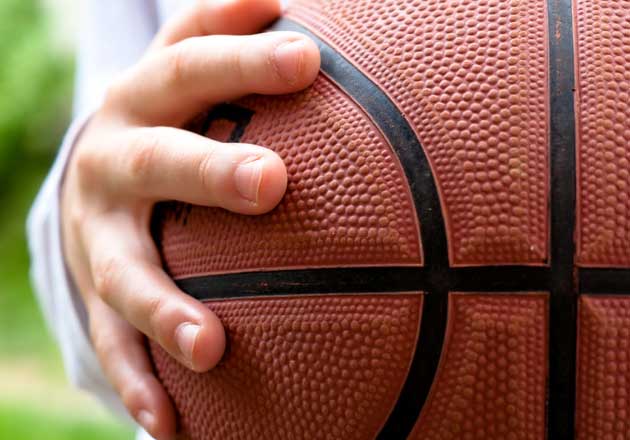


All four major U.S. sports are in play this week with baseball (MLB) having just wrapped up its World Series, football (NFL) in the thick of its regular season, and both ice hockey (NHL) and basketball (NBA) broadcasting their opening games.
From fast pitches to perfect layups, and from smooth spiral passes to rocketing slap shots, each of these sports has something important in common. They demand a sure grip and precise release, things that are hard to achieve if you’ve got sweaty palms or palmar hyperhidrosis.
Of course professional athletes aren’t the only ones who don’t want sweaty palms messing up their box scores. From recreational to school sports, sweaty hands can make it tough (if not impossible) to play your best. Beyond the ball field, palmar hyperhidrosis (excessive sweating of the hands) has been shown to severely and negatively impact quality of life (even more than better known skin conditions such as psoriasis and severe acne.)
Fortunately, there’s a tried-and-true treatment for palmar as well as plantar (foot) excessive sweating called iontophoresis.
Iontophoresis has been around for more than 70 years, it works, it’s safe, it’s non-invasive, you can do it at home, and it’s elegantly simple. During iontophoresis, a medical device is used to pass a mild electrical current through water (in shallow pans big enough for your hands or feet) and through the skin's surface. The result? Research shows that 91% of patients find relief from sweaty palms using iontophoresis and that sweating is typically reduced by over 80%. There are no significant or serious side effects and the benefits are long-term, provided you keep up with the maintenance schedule your doctor recommends (usually once per week).
There are a variety of iontophoresis devices available. For some options, visit our Fan Faves page.
Instructions for using iontophoresis devices will vary (always follow your healthcare provider’s recommendations) but, in general, patients sit with both hands or both feet, or one hand and one foot, immersed in shallow trays filled with tap water for a short period of time (20 to 40 minutes) while the device sends a small electrical current through the water. The process is normally repeated three times per week until the desired results are seen. Once satisfactory dryness has been achieved, patients are switched to a maintenance schedule, usually once per week. To maintain sweat-relief, iontophoresis treatments should be conducted regularly and before sweating begins to return.
On first glance, an iontophoresis device may seem pricey, but the upfront expense is relatively reasonable when you realize that the devices last for many years (if not decades), you can self-manage your treatments, and the devices could be shared among family members who suffer from excessive sweating (hyperhidrosis frequently runs in families). Also, health insurance often covers the cost of the device and sometimes “rent-to-own” is an option.
Looking to try an antiperspirant for your hands instead? Visit our Fan Faves for some antiperspirant options and discount codes, too.
If you love sports, don’t let sweaty hands (or feet) stop you from playing! Find an experienced doctor, get treated for excessive sweating, and grab those balls, rackets, clubs, and sticks to get back in the game.
And while you’re at it, grab the T.V. remote too. There’s hot competition to be watched.
Parting Shots on Iontophoresis:
Iontophoresis not right for you? There are other effective treatments for excessive sweating available. Plus, make sure you look to see if there are studies you can participate in!
Thank you for supporting the important work of the International Hyperhidrosis Society. Together we are making a difference!
Latest Blogs